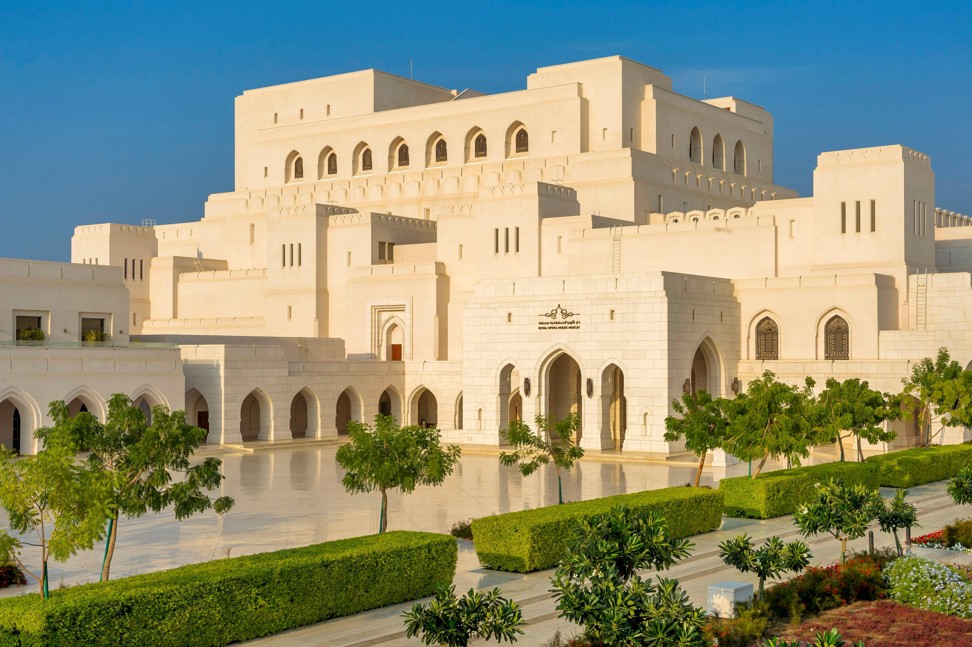
In Oman, a fragrant journey back through the centuries reveals the Middle East’s intoxicating appeal
- A safe haven for visitors to a fraught region, Oman is one of the Middle East’s most underrated destinations
- More authentic than the glitzy UAE, the country’s souks offer a bewildering array of trinkets and souvenirs
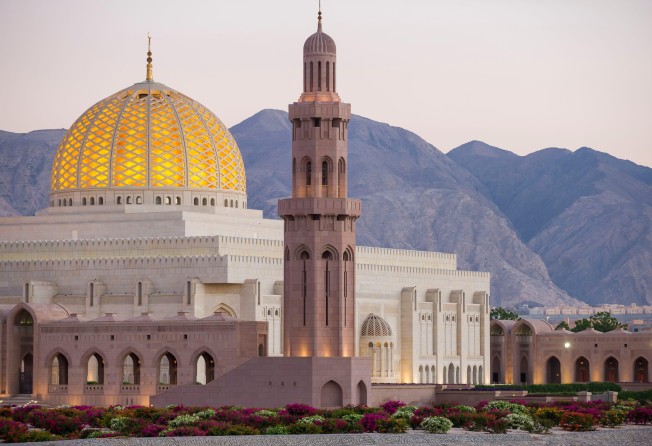
A towering testament to faith, it is visible across the city of Muscat, but the Omani capital’s huge Grand Mosque also makes a striking impact on another sense. Competing fragrances – jasmine, bougainvillea and frangipani – hang in the air across the manicured grounds and gardens of the mosque, as they do across much of this country.
Jutting out into the Arabian Sea, Oman is larger than many visitors realise, being only slightly smaller in total land area than Vietnam or Finland. While the southern border, with Yemen, should be avoided for the time being, for obvious geopolitical reasons, Oman is a safe destination that offers a more cultural experience than that to be found amid the glitz and bling of the United Arab Emirates and most Middle Eastern cities.
The capital’s new opera house, theatre and museum, as well as the Grand Mosque, are all landmark projects that have been instigated by the world’s third-longest-serving monarch, Qaboos bin Said al Said.
The Grand Mosque can accommodate up to 20,000 worshippers and was opened in 2001. Mosques usually have one or two minarets, but this one has five, representing the five pillars of Islam and the requirement to pray five times a day. Inside, the main prayer hall boasts both the world’s largest chandelier and second-largest carpet, the latter an extraordinary work of art that took 600 Iranian women three years to craft and contains, so we are told, 1.7 billion knots.

Thanks to air conditioning hidden in the Italian marble columns, the huge space is a cool and calming escape from the oppressive heat and glare of the sun, while outside, covered walkways and the gardens provide shade. White frangipani, jasmine and hot-pink bougainvillea sit in dozens of neat rows and the garden serves a very deliberate purpose; it is here that devotees calm themselves and reset their minds after escaping the hectic city outside, before they pray.
“Hectic” is relative, however. The old city around Muttrah, for instance, is particularly laid-back, even when visitors have disembarked from cruise ships to hit the souks and visit the two 16th-century Portuguese forts that overlook the Corniche.
Fragrant for an entirely different reason is Muttrah’s fish market. It, too, is an impressive new build, designed to reflect the flow of Arabic script, although the modern incarnation lacks some of the charm of the centuries-old market that preceded it. What hasn’t changed are the market’s fascinating cast of characters from across Arabia and Africa, the breathtaking quality and variety of fish on display, and the scent of local delicacies such as salted cod, a remnant from the days of Portuguese rule.
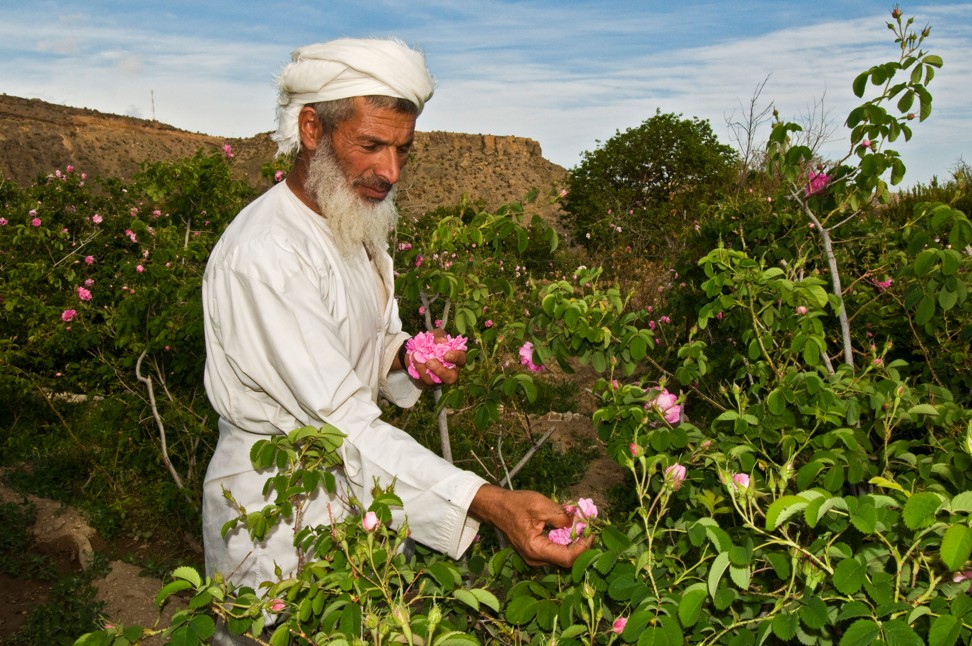
A hundred or more traders sell huge swordfish and ruby-red tuna at prices that would make Hong Kong restaurateurs sick to the gills. Also plucked from the Arabian Sea come enormous prawns, spiny lobster, kingfish, red mullet, grouper, silver mackerel and sea bream. Visitors are encouraged to wander, snap photos and take a feel of less perishable produce such as dates, cashew nuts and pomegranate molasses.
A short stroll from the fish market stands the souk, where traders sell clothes, homeware and produce to locals, and little stores have gold, frankincense – and yes, even myrrh – on display to tempt the tourists. The maze of walkways is not as intense or large as the Medina in Marrakesh or Istanbul’s Grand Bazaar, but the choice can still be bewildering.
Frankincense comes from the old French “franc encens”, meaning “pure incense”, which goes some way to explaining the prices. It’s a gum resin tapped from trees grown mainly in Dhofar, in Oman’s far south, and four main species of tree are used, the rarer the more expensive.
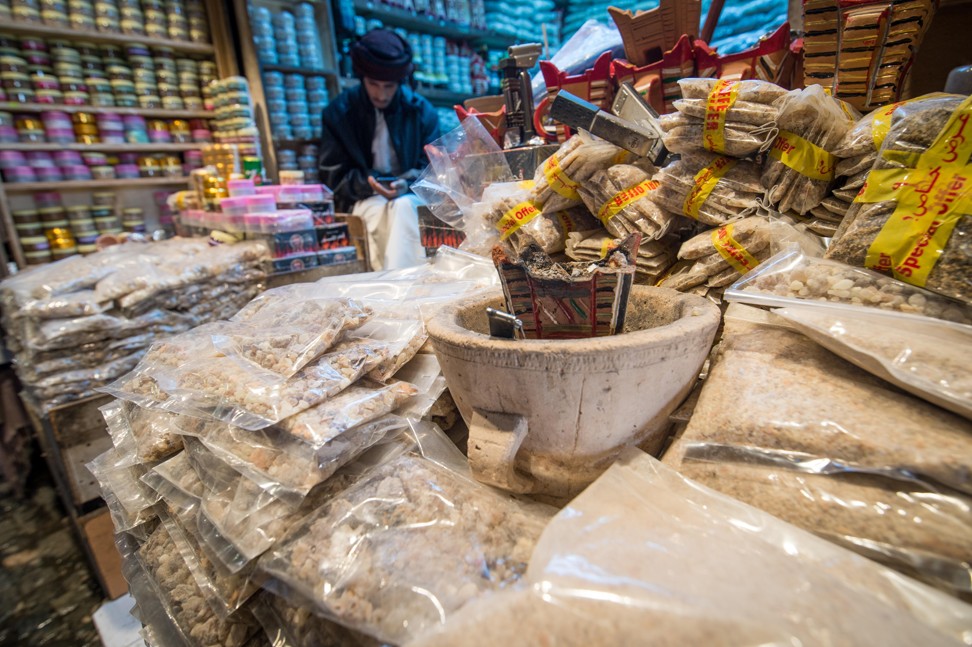
For millennia, frankincense has been used across North Africa and the Middle East for everything from repelling mosquitoes to celebrating weddings, marking funerals, banishing evil spirits and merely perfuming the home. If you’re going to purchase some in the souk, it pays to go with someone who knows what they’re buying, but the experience itself is a delight, as shopkeepers burn nuggets that send aromatic wafts into the air before gentle haggling can begin.
Oman’s former capital, Nizwa, sits inland, some 160km south of Muscat en route to the Al Hajar Mountains.
The city’s market is an especially popular stop during the Friday livestock sales. Farmers come from all over Oman with their prize cattle, goats and sheep, manoeuvring them from the flatbeds of ancient pickup trucks – or the back seat of a battered former taxi, in one instance I witness – before walking them in a clockwise direction, enabling potential buyers to assess the creatures. Beautiful traditional clothes and the photogenic, weathered faces of the merchants suggest an earlier time; the iPhones that are whipped out to calculate costs do not.
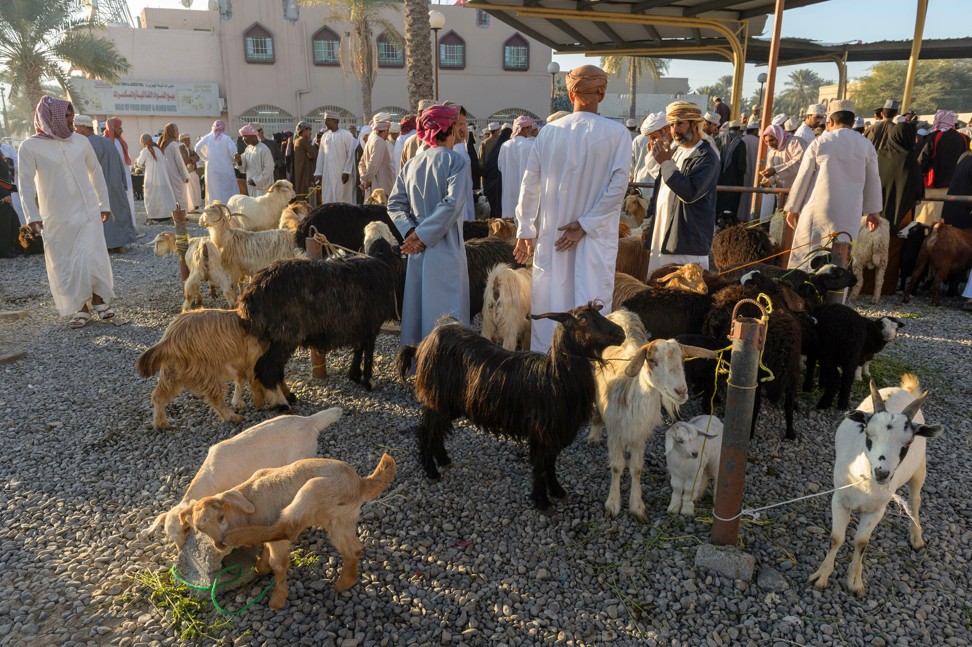
Elsewhere in the market, which dates back more than 1,200 years, can be found boxes of pungent purple-white garlic knots, tomatoes of an almost unnaturally bright red and mounds of fresh herbs spilling from carts onto the dusty streets. Watermelons are hacked into dripping slices and sticky dates abound at every turn, but many who visit the market save their appetite for the classic treat of halwa, made with rosewater, ghee, sugar and saffron, served with kahwa coffee infused with cardamom.
From Nizwa we climb up into the mountains, a 36km winding road with few rivals anywhere on the planet. As one hairpin bend gives way to another, vertiginous drops into gorges and dramatic soaring peaks explain why Jebel Shams is known as the Grand Canyon of Arabia.
At 1,980 metres, Jabal Al Akhdar is one of the peninsula’s most astonishing destinations. The climate is much cooler than on the dusty plains of Nizwa, but it’s the colours that stun. Jabal Al Akhdar translates as “green mountain” and the views from the Anantara hotel, perched on the edge of the canyon, are those that Diana, Princess of Wales, soaked up during a 1986 visit with Prince Charles.

Today, “Diana’s Point” is a large but elegant hotel viewing platform suspended above the vast gorge. On one side of the valley, terraces of walnut and pomegranate trees vie for attention with wild rose bushes that perfume the air in spring. All are irrigated by an ingenious ancient channelling system known as falaj. You can also spot date plantations and banana trees, and coffee used to grow here, too – unsurprisingly, as neighbouring Yemen was the first country known to have enjoyed a cup of morning joe.
Even though they don’t produce fruit, wild olive trees are used in these parts as fuel, for grilling lamb, imparting it with heady aromas, even before wild rosemary is added.
Sixteenth-century villages dot the hillsides, and in one of them lives Abdullah, who has been making rosewater for more than 60 years in his tiny house, its wooden beams and plaster walls covered in a film of black soot from the craft. Incongruously dressed in a Mountain Dew T-shirt (it’s the country’s most popular soda), he demonstrates the age-old process he undertakes, which is all the more remarkable because he is now almost blind.
He heats the rose petals in clay ovens on open flames before placing them in tarnished silver bowls with water. Like so much else in Oman, the smell rising from his labour is intoxicating.